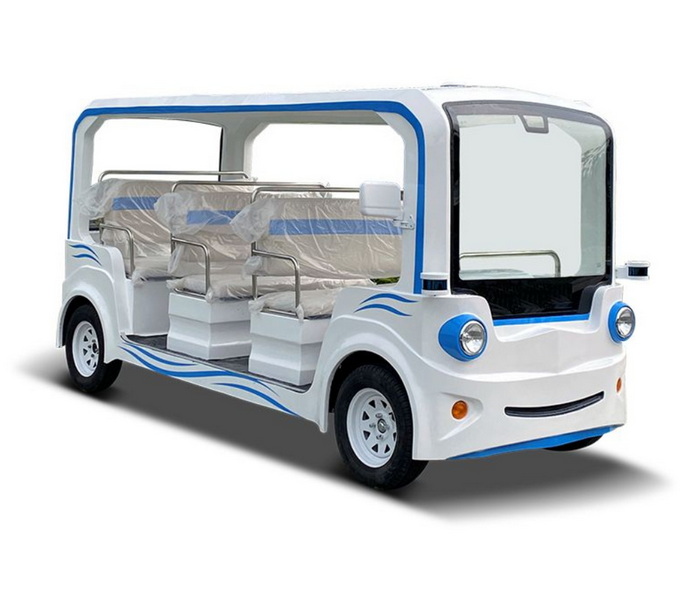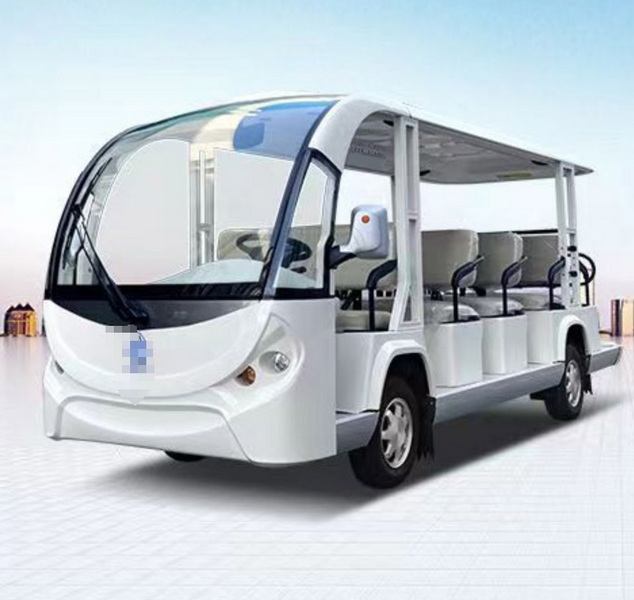Content Menu
● Introduction to Electric Sightseeing Carts
● Top Destinations Benefiting from Electric Sightseeing Carts
>> 1. San Francisco, USA
>> 2. Philadelphia, USA
>> 3. Washington, D.C., USA
>> 4. Key West, Florida, USA
>> 5. Grand Canyon National Park, USA
>> 6. The Great Ocean Road, Australia
>> 7. Amsterdam, Netherlands
>> 8. Kyoto, Japan
>> 9. Barcelona, Spain
● Benefits of Electric Sightseeing Carts in Tourist Destinations
>> Environmental Advantages
>> Enhanced Visitor Experience
>> Economic and Social Impact
>> Supporting Sustainable Tourism
>> Accessibility and Inclusivity
● Conclusion
● FAQ
>> 1. What makes electric sightseeing carts better than traditional tour vehicles?
>> 2. Are electric sightseeing carts suitable for all types of terrain?
>> 3. How do electric sightseeing carts contribute to sustainable tourism?
>> 4. Can electric sightseeing carts accommodate groups or families?
>> 5. What infrastructure is needed to support electric sightseeing carts?
Electric sightseeing carts are revolutionizing the way tourists explore popular destinations around the world. These eco-friendly vehicles offer a quieter, cleaner, and more personalized way to discover cultural landmarks, natural wonders, and vibrant cityscapes. This article delves into the top destinations that have embraced electric sightseeing carts, highlighting how these vehicles enhance visitor experiences while promoting sustainable tourism.

Introduction to Electric Sightseeing Carts
Electric sightseeing carts are small, battery-powered vehicles designed to transport tourists comfortably and efficiently through various terrains. Unlike traditional gas-powered vehicles, they produce zero emissions and operate quietly, allowing travelers to immerse themselves in the environment without noise pollution or harmful fumes. Their compact size and maneuverability make them ideal for navigating narrow streets, parks, and historic sites that might be inaccessible to larger vehicles.
The rise in environmental awareness and the global push toward sustainability have accelerated the adoption of electric sightseeing carts in many tourist hotspots. These carts not only reduce the carbon footprint associated with tourism but also improve the overall visitor experience by offering flexible, customizable tours. Many companies have integrated GPS-guided systems, audio narration, and interactive features into these carts, making sightseeing both educational and entertaining.
Top Destinations Benefiting from Electric Sightseeing Carts
1. San Francisco, USA
San Francisco has become a pioneer in integrating electric sightseeing carts into its tourism offerings. GoCar Tours provides GPS-guided electric carts that allow visitors to explore the city's iconic landmarks such as the Golden Gate Bridge, Fisherman's Wharf, and the vibrant neighborhoods at their own pace. The electric carts enhance the sightseeing experience by combining storytelling with mobility, all while reducing the environmental footprint of tourism in the city.
The city's hilly terrain and narrow streets make electric carts an excellent choice for visitors who want to avoid the physical strain of walking or the hassle of parking. Additionally, the quiet operation of these carts allows tourists to enjoy the natural sounds of the bay and the bustling city without intrusive engine noise.
2. Philadelphia, USA
Philadelphia offers unique electric cart tours that showcase its rich history and cultural heritage. The "Philly by Moonlight" tour takes visitors through beautifully lit historic sites like Independence Hall and the Philadelphia Museum of Art. Another two-hour tour covers key attractions including Elfreth's Alley, Betsy Ross House, and the Magic Gardens. These electric carts provide a private, comfortable, and eco-friendly way to experience the city's charm, with expert guides narrating the journey.
The use of electric carts in Philadelphia has also helped reduce traffic congestion in the historic Old City district, a popular area that often suffers from overcrowding. By encouraging visitors to use electric carts, the city has improved pedestrian safety and preserved the integrity of its historic streets.
3. Washington, D.C., USA
The U.S. capital has embraced electric sightseeing carts to provide visitors with an intimate look at its monuments and memorials. Tours such as the "DC Monuments and Capitol Hill Tour" use open-sided electric carts to offer unobstructed views of landmarks like the Lincoln Memorial, the White House, and the Martin Luther King Jr. Memorial. These tours combine sustainability with rich historical storytelling, making them a favorite among eco-conscious travelers.
Washington, D.C.'s extensive network of parks and pedestrian-friendly zones makes it an ideal setting for electric sightseeing carts. The low emissions and minimal noise help maintain the solemn atmosphere around memorials and government buildings, enhancing the reflective experience for visitors.
4. Key West, Florida, USA
Key West's narrow streets and scenic coastal roads are perfect for electric car rentals. Visitors can explore the island's beaches, historic sites like the Harry Truman Little White House, and Hemingway's House Museum without the hassle of parking or traffic congestion. The electric cars provide a quiet, efficient, and environmentally friendly way to enjoy the laid-back island atmosphere.
In addition to sightseeing, electric carts in Key West support the local economy by encouraging longer stays and more frequent stops at small businesses. The carts' ease of use and accessibility make them popular among older tourists and those with mobility challenges, broadening the appeal of the destination.
5. Grand Canyon National Park, USA
While not solely focused on sightseeing carts, the Grand Canyon National Park supports electric vehicle tourism by installing EV charging stations at key locations. This infrastructure allows visitors to use electric vehicles to explore the park's vast natural beauty, reducing pollution and preserving the pristine environment.
The park's commitment to sustainability includes shuttle services that use electric vehicles, minimizing the environmental impact of transporting millions of visitors annually. These efforts help protect the fragile ecosystem and maintain the park's breathtaking vistas for future generations.
6. The Great Ocean Road, Australia
This iconic coastal route has integrated electric vehicle charging stations, encouraging tourists to use electric cars for their scenic drives. The availability of charging infrastructure supports sustainable tourism by enabling longer trips in electric vehicles, reducing the carbon footprint of travel along this breathtaking route.
The Great Ocean Road's blend of dramatic cliffs, beaches, and rainforests makes it a magnet for eco-tourists. Electric sightseeing carts and vehicles allow visitors to experience the natural beauty without contributing to air and noise pollution, preserving the tranquility of the area.
7. Amsterdam, Netherlands
Amsterdam, known for its canals and historic architecture, has also embraced electric sightseeing carts as a complement to its famous bike culture. Electric carts provide an accessible alternative for tourists who may find cycling challenging, such as elderly visitors or families with young children.
The city's extensive network of pedestrian zones and parks makes electric carts an ideal way to explore without disturbing the delicate urban environment. Many tours combine electric cart rides with boat tours on the canals, offering a comprehensive and sustainable sightseeing experience.
8. Kyoto, Japan
Kyoto's ancient temples, traditional gardens, and narrow streets benefit greatly from the use of electric sightseeing carts. The carts allow visitors to navigate areas that are off-limits to larger vehicles, such as historic districts and temple grounds.
Electric carts in Kyoto help maintain the city's cultural heritage by reducing pollution and noise, which can detract from the serene atmosphere of its sacred sites. Guided tours in these carts often include audio explanations about the history and significance of each location, enriching the visitor experience.
9. Barcelona, Spain
Barcelona's mix of modernist architecture and Mediterranean charm makes it a popular destination for electric sightseeing carts. The city has implemented electric cart tours that cover attractions like the Sagrada Familia, Park Güell, and the Gothic Quarter.
Electric carts help manage the heavy tourist traffic in Barcelona by offering an alternative to crowded buses and taxis. Their small size allows them to navigate narrow streets and pedestrian areas, providing a more intimate and flexible tour option.

Benefits of Electric Sightseeing Carts in Tourist Destinations
Environmental Advantages
Electric sightseeing carts produce zero tailpipe emissions, significantly reducing air pollution in sensitive tourist areas. Their quiet operation also minimizes noise pollution, preserving the natural ambiance and enhancing visitor experience. This is especially important in historic districts and natural parks where maintaining the environment's integrity is paramount.
Enhanced Visitor Experience
The silent operation of electric carts allows tourists to better appreciate the sounds and sights of their surroundings. These vehicles can access narrow streets, parks, and historic districts where larger vehicles cannot go, providing a more intimate and immersive sightseeing experience. Many electric carts are equipped with advanced GPS and audio systems, allowing visitors to customize their tours and learn about the sites in multiple languages.
Economic and Social Impact
Electric carts often accommodate small groups, fostering private and personalized tours that can command premium pricing. They also reduce the wear and tear on historic sites caused by heavier vehicles, helping preserve these destinations for future generations. Additionally, the adoption of electric carts creates new business opportunities in rental services, guided tours, and maintenance, contributing positively to local economies.
Supporting Sustainable Tourism
By adopting electric sightseeing carts, destinations position themselves as leaders in sustainable tourism. This attracts environmentally conscious travelers and aligns with global efforts to reduce carbon footprints in the travel industry. The use of electric carts also encourages other sustainable practices, such as waste reduction and energy-efficient infrastructure, creating a holistic approach to responsible tourism.
Accessibility and Inclusivity
Electric sightseeing carts improve accessibility for visitors with mobility challenges, seniors, and families with young children. Their ease of use and comfortable seating make sightseeing more inclusive, allowing a broader range of people to enjoy cultural and natural attractions. Many destinations have incorporated electric carts into their accessibility programs, ensuring that tourism is welcoming to all.
Conclusion
Electric sightseeing carts are transforming the tourism landscape by offering a sustainable, enjoyable, and efficient way to explore top destinations worldwide. Cities like San Francisco, Philadelphia, Washington D.C., and Key West have successfully integrated these vehicles into their tourism infrastructure, enhancing visitor experiences while reducing environmental impacts. Beyond the United States, destinations such as Amsterdam, Kyoto, and Barcelona demonstrate the global appeal and versatility of electric sightseeing carts.
As electric vehicle technology and charging infrastructure continue to advance, more destinations will likely adopt electric sightseeing carts, paving the way for greener and more responsible travel. These carts not only protect the environment but also enrich the cultural and sensory experience of tourism, making them a vital component of the future of sustainable travel.

FAQ
1. What makes electric sightseeing carts better than traditional tour vehicles?
Electric sightseeing carts produce zero emissions and operate quietly, reducing environmental and noise pollution. Their compact size allows access to narrow or sensitive areas, enhancing the sightseeing experience. Additionally, many are equipped with interactive technology that enriches tours.
2. Are electric sightseeing carts suitable for all types of terrain?
Most electric sightseeing carts are designed for urban and park environments. Some models can handle light off-road conditions, but very rugged terrain may require specialized vehicles. It is important to check the specific capabilities of the cart before planning tours in challenging areas.
3. How do electric sightseeing carts contribute to sustainable tourism?
They reduce carbon footprints by eliminating fossil fuel use, minimize noise pollution, and help preserve historic and natural sites by reducing wear and tear from heavier vehicles. Their adoption encourages a broader commitment to eco-friendly tourism practices.
4. Can electric sightseeing carts accommodate groups or families?
Yes, many electric carts can seat between four to seven passengers, making them ideal for small groups or families seeking private tours. Some companies offer customizable seating arrangements and options for guided or self-guided tours.
5. What infrastructure is needed to support electric sightseeing carts?
Charging stations are essential to keep the carts operational throughout the day. Many tourist destinations are investing in EV charging infrastructure to support electric tourism vehicles. Maintenance facilities and trained staff are also important to ensure smooth operation and safety.










































